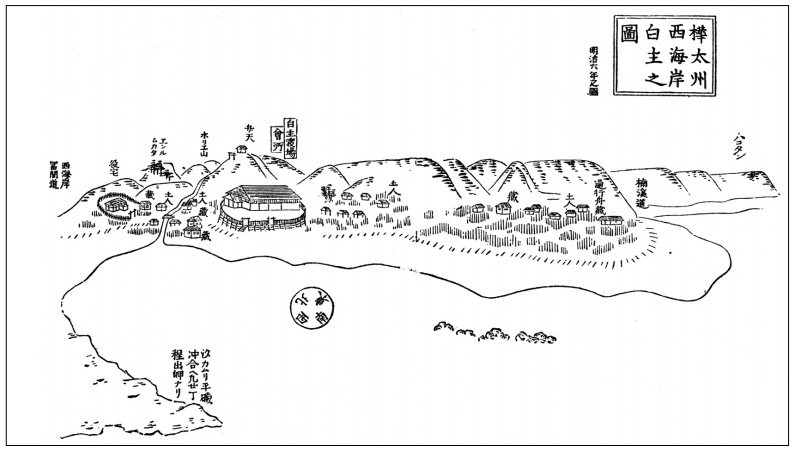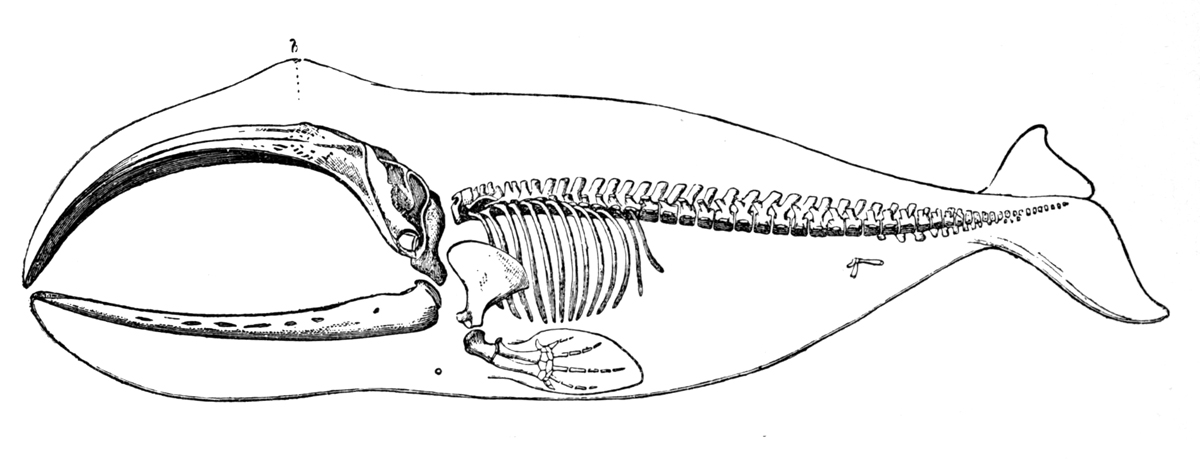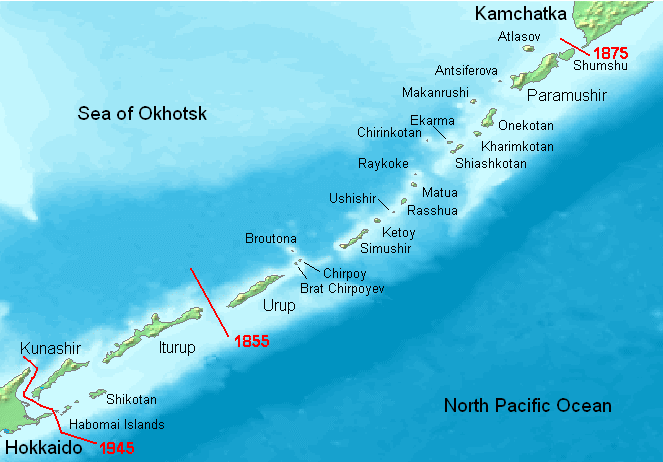|
Cape Of Elisabeth
Cape Elizabeth (, "Gaoto-misaki") is a cape on the Schmidt Peninsula. It is the northernmost point of Sakhalin. Cape Elizabeth was named by Adam Johann von Krusenstern (aka ''Ivan Kruzenstern'') in 1805 after Empress Elizaveta, wife of Alexander I of Russia. The cape is a territory under administration of the Okhinsky District and was even considered the northernmost point of Japan until the Treaty of Saint Petersburg in 1875 when it was replaced by the northernmost point of Atlasov Island (known in Japanese as and in Ainu as Oyakoba). History Between 1848 and 1874, American whaleships caught bowhead whales off the cape. They also went ashore to obtain wood.''Navy'', of New Bedford, Sep. 19, 1861, Kendall Whaling Museum. See also *Cape Crillon Cape Crillon (, "Nishinotoro-misaki" (Cape Nishinotoro in Japanese), ) is the southernmost point of Sakhalin. The cape was named by Frenchman Jean-François de La Pérouse, who was the first European to discover it. Cape Sōya, ... [...More Info...] [...Related Items...] OR: [Wikipedia] [Google] [Baidu] |
Cape (geography)
In geography, a cape is a headland, peninsula or promontory extending into a body of water, usually a sea. A cape usually represents a marked change in trend of the Coast, coastline, often making them important landmarks in sea navigation. This also makes them prone to natural forms of erosion, mainly tidal actions, resulting in a relatively short geological lifespan. Formation Capes can be formed by Glacier, glaciers, Volcano, volcanoes, and changes in sea level. Erosion plays a large role in each of these methods of formation. Coastal erosion by waves and currents can create capes by wearing away softer rock and leaving behind harder rock formations. Movements of the Earth's crust can uplift land, forming capes. For example, the Cape of Good Hope was formed by tectonic forces. Volcanic eruptions can create capes by depositing lava that solidifies into new landforms. Cape Verde, (also known as Cabo Verde) is an example of a volcanic cape. Glaciers can carve out capes by erod ... [...More Info...] [...Related Items...] OR: [Wikipedia] [Google] [Baidu] |
Territory (administrative Division)
A territory is an area of land, sea, or space, belonging or connected to a particular country, person, or animal. In international politics, a territory is usually a geographic area which has not been granted the powers of self-government, i.e. an area that is under the jurisdiction of a sovereign state. As a subdivision, a territory in most countries is an organized division of an area that is controlled by a country but is not formally developed into, or incorporated into, a political unit of that country, which political units are of equal status to one another and are often referred to by words such as "provinces", "regions", or "states". In its narrower sense, it is "a geographic region, such as a colonial possession, that is dependent on an external government." Etymology The origins of the word "territory" begin with the Proto-Indo-European root ''ters'' ('to dry'). From this emerged the Latin word ''terra'' ('earth, land') and later the Latin word ''territorium'' ( ... [...More Info...] [...Related Items...] OR: [Wikipedia] [Google] [Baidu] |
Cape Crillon
Cape Crillon (, "Nishinotoro-misaki" (Cape Nishinotoro in Japanese), ) is the southernmost point of Sakhalin. The cape was named by Frenchman Jean-François de La Pérouse, who was the first European to discover it. Cape Sōya, in Japan, is located to the south, across La Pérouse Strait. A Russian weather station, a lighthouse and a military base are all situated at Cape Crillon today. Additionally, the cape is the Russian terminus of the proposed Sakhalin–Hokkaido Tunnel that would connect Japan and Russia by rail. On the western coast of the cape is the rock formation formerly known in Japanese as ''Kinfugan'' (金敷岩, literally "Anvil Rock"). History In 1808, Mamiya Rinzō was dispatched by the Tokugawa shogunate to survey Japanese territory on Sakhalin. Having arrived at the Matsumae domain outpost of Shiranushi on the southern tip of Cape Crillon, he was directed by local Ainu to a place called where the remains of rammed earth walls were found. By the ear ... [...More Info...] [...Related Items...] OR: [Wikipedia] [Google] [Baidu] |
Bowhead Whale
The bowhead whale (''Balaena mysticetus''), sometimes called the Greenland right whale, Arctic whale, and polar whale, is a species of baleen whale belonging to the family Balaenidae and is the only living representative of the genus '' Balaena''. It is the only baleen whale endemic to the Arctic and subarctic waters, and is named after its characteristic massive triangular skull, which it uses to break through Arctic ice. Bowheads have the largest mouth of any animal representing almost one-third of the length of the body, the longest baleen plates with a maximum length of , and may be the longest-lived mammals, with the ability to reach an age of more than 200 years. The bowhead was an early whaling target. Their population was severely reduced before a 1966 moratorium was passed to protect the species. Of the five stocks of bowhead populations, three are listed as "endangered", one as " vulnerable", and one as "lower risk, conservation dependent" according to the IUCN Red ... [...More Info...] [...Related Items...] OR: [Wikipedia] [Google] [Baidu] |
Whaler
A whaler or whaling ship is a specialized vessel, designed or adapted for whaling: the catching or processing of whales. Terminology The term ''whaler'' is mostly historic. A handful of nations continue with industrial whaling, and one, Japan, still dedicates a single factory ship for the industry. The vessels used by aboriginal whaling communities are much smaller and are used for various purposes over the course of the year. The ''whale catcher'' was developed during the Steam-powered vesselage , and then driven by diesel engines throughout much of the twentieth century. It was designed with a harpoon gun mounted at its bow and was fast enough to chase and catch rorquals such as the fin whale. At first, whale catchers either brought the whales they killed to a whaling station, a settlement ashore where the carcasses could be processed, or to its factory ship anchored in a sheltered bay or inlet. With the later development of the slipway at the ship's stern, whale cat ... [...More Info...] [...Related Items...] OR: [Wikipedia] [Google] [Baidu] |
United States
The United States of America (USA), also known as the United States (U.S.) or America, is a country primarily located in North America. It is a federal republic of 50 U.S. state, states and a federal capital district, Washington, D.C. The 48 contiguous states border Canada to the north and Mexico to the south, with the semi-exclave of Alaska in the northwest and the archipelago of Hawaii in the Pacific Ocean. The United States asserts sovereignty over five Territories of the United States, major island territories and United States Minor Outlying Islands, various uninhabited islands in Oceania and the Caribbean. It is a megadiverse country, with the world's List of countries and dependencies by area, third-largest land area and List of countries and dependencies by population, third-largest population, exceeding 340 million. Its three Metropolitan statistical areas by population, largest metropolitan areas are New York metropolitan area, New York, Greater Los Angeles, Los Angel ... [...More Info...] [...Related Items...] OR: [Wikipedia] [Google] [Baidu] |
Atlasov Island
Atlasov Island, known in Russian as Ostrov Atlasova (Остров Атласова), or in Japanese as Araido (阿頼度島), is the northernmost island and volcano and also the highest volcano of the Kuril Islands, part of the Sakhalin Oblast in Russia. The Russian name is sometimes rendered in English as Atlasova Island. Other names for the island include Uyakhuzhach, Oyakoba (Ainu) and Alaid, the name of the volcano on the island. The island is named after Vladimir Atlasov, a 17th-century Russian explorer who incorporated the nearby Kamchatka Peninsula into Russia. It is essentially the cone of the submarine volcano Vulkan Alaid protruding above the Sea of Okhotsk to a height of . The island has an area of , and is currently uninhabited. Numerous pyroclastic cones dot the lower flanks of basaltic to basaltic andesite volcano, particularly on the NW and SE sides, including an offshore cone formed during the 1933–34 eruption. Alaid Volcano lava flow, Atlasov Island, Sakha ... [...More Info...] [...Related Items...] OR: [Wikipedia] [Google] [Baidu] |
Treaty Of Saint Petersburg (1875)
The Treaty of Saint Petersburg (; ) between the Empire of Japan and the Russian Empire was signed on 7 May 1875, and its ratifications exchanged at Tokyo on 22 August 1875. The treaty itself went into effect in 1877. Its terms stipulated that Japan cedes to Russia the part of Sakhalin island it then owned in exchange for the group of the Kuril Islands owned by Russia (between Iturup island and the Kamchatka Peninsula). Consequently, Sakhalin island as a whole became Russian territory, and the entire Kuril archipelago Japanese territory. The authentic text of the treaty is written in French. Differences with its Japanese translation contributed to the controversy on what constitutes the Kuril islands, claims to which Japan renounced in 1951 by the Treaty of San Francisco. The Treaty of Saint Petersburg (1875) is part of an ongoing, and long-standing, territorial dispute between Russia and Japan over the jurisdiction of the Kuril Islands. Background Golovnin Incident In 1 ... [...More Info...] [...Related Items...] OR: [Wikipedia] [Google] [Baidu] |
Japan
Japan is an island country in East Asia. Located in the Pacific Ocean off the northeast coast of the Asia, Asian mainland, it is bordered on the west by the Sea of Japan and extends from the Sea of Okhotsk in the north to the East China Sea in the south. The Japanese archipelago consists of four major islands—Hokkaido, Honshu, Shikoku, and Kyushu—and List of islands of Japan, thousands of smaller islands, covering . Japan has a population of over 123 million as of 2025, making it the List of countries and dependencies by population, eleventh-most populous country. The capital of Japan and List of cities in Japan, its largest city is Tokyo; the Greater Tokyo Area is the List of largest cities, largest metropolitan area in the world, with more than 37 million inhabitants as of 2024. Japan is divided into 47 Prefectures of Japan, administrative prefectures and List of regions of Japan, eight traditional regions. About three-quarters of Geography of Japan, the countr ... [...More Info...] [...Related Items...] OR: [Wikipedia] [Google] [Baidu] |
Okhinsky District
Okhinsky District () is an administrative district (raion) of Sakhalin Oblast, Russia; one of the seventeen in the oblast.Law #25-ZO Municipally, it is incorporated as Okhinsky Urban Okrug.Law #524 It is located in the north of the Island of Sakhalin. The area of the district is . Its administrative center is the town A town is a type of a human settlement, generally larger than a village but smaller than a city. The criteria for distinguishing a town vary globally, often depending on factors such as population size, economic character, administrative stat ... of Okha. Population (excluding the administrative center): References Notes Sources * * {{Use mdy dates, date=December 2012 Districts of Sakhalin Oblast ... [...More Info...] [...Related Items...] OR: [Wikipedia] [Google] [Baidu] |
Alexander I Of Russia
Alexander I (, ; – ), nicknamed "the Blessed", was Emperor of Russia from 1801, the first king of Congress Poland from 1815, and the grand duke of Finland from 1809 to his death in 1825. He ruled Russian Empire, Russia during the chaotic period of the Napoleonic Wars. The eldest son of Emperor Paul I and Sophie Dorothea of Württemberg, Alexander succeeded to the throne after his father was murdered. As prince and during the early years of his reign, he often used liberal rhetoric but continued Russian absolutism, Russia's absolutist policies in practice. In the first years of his reign, he initiated some minor social reforms and (in 1803–04) major liberal educational reforms, such as building more universities. Alexander appointed Mikhail Speransky, the son of a village priest, as one of his closest advisors. The over-centralized Collegium (ministry), Collegium ministries were abolished and replaced by the Committee of Ministers of the Russian Empire, Committee of Ministers ... [...More Info...] [...Related Items...] OR: [Wikipedia] [Google] [Baidu] |
Schmidt Peninsula (Sakhalin)
Schmidt Peninsula () is a peninsula in Sakhalin Oblast, Russian Federation. It is the northernmost point of Sakhalin Island and is located north of Okha town. History The indigenous Nivkh people of northern Sakhalin called the peninsula Mif-Tyongr (Миф-тёнгр), meaning "head of the earth." The name Schmidt Peninsula was chosen by geologist N. Tikhonovich in 1908, in honor of fellow geologist Fyodor Schmidt who had visited Sakhalin in 1866. Previously it had been named "Saint Elizabeth Peninsula" in certain maps. Cape Elizabeth and Cape Mary, the two main headlands of the peninsula, had been named in 1805 by Russian Navy Admiral Ivan Kruzenshtern (1770–1846).Трёхтомный отчет «Путешествия вокруг света в 1803, 1804, 1805 и 1806 гг. на кораблях „Надежде“ и „Неве“» (''tr. "Three-volume report "Travels around the world in 1803, 1804, 1805 and 1806". on the ships "Nadezhda" and "Neva""'') Geography ... [...More Info...] [...Related Items...] OR: [Wikipedia] [Google] [Baidu] |





